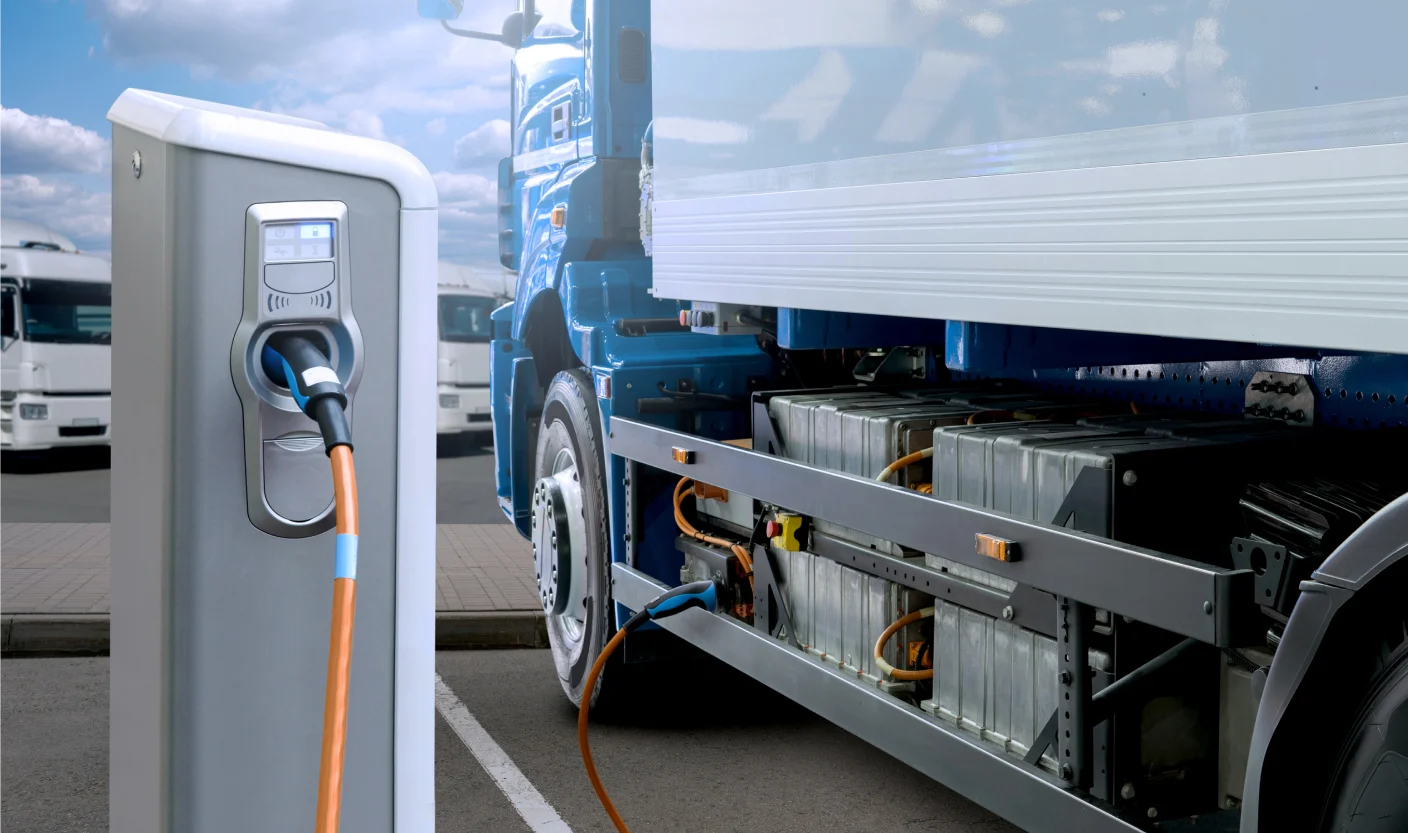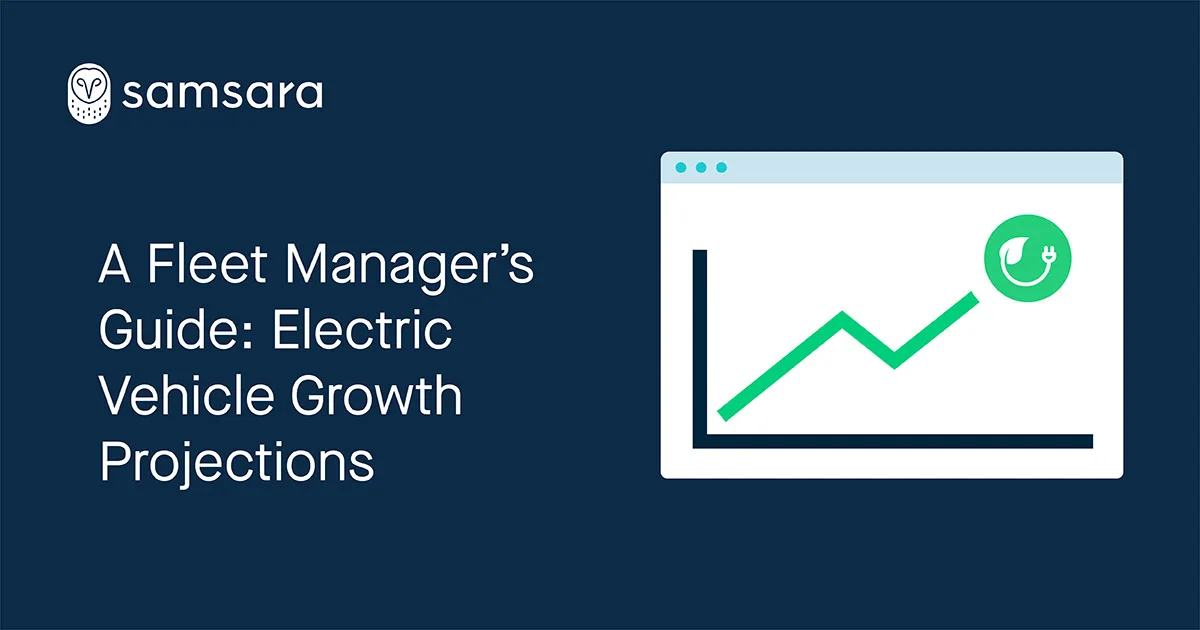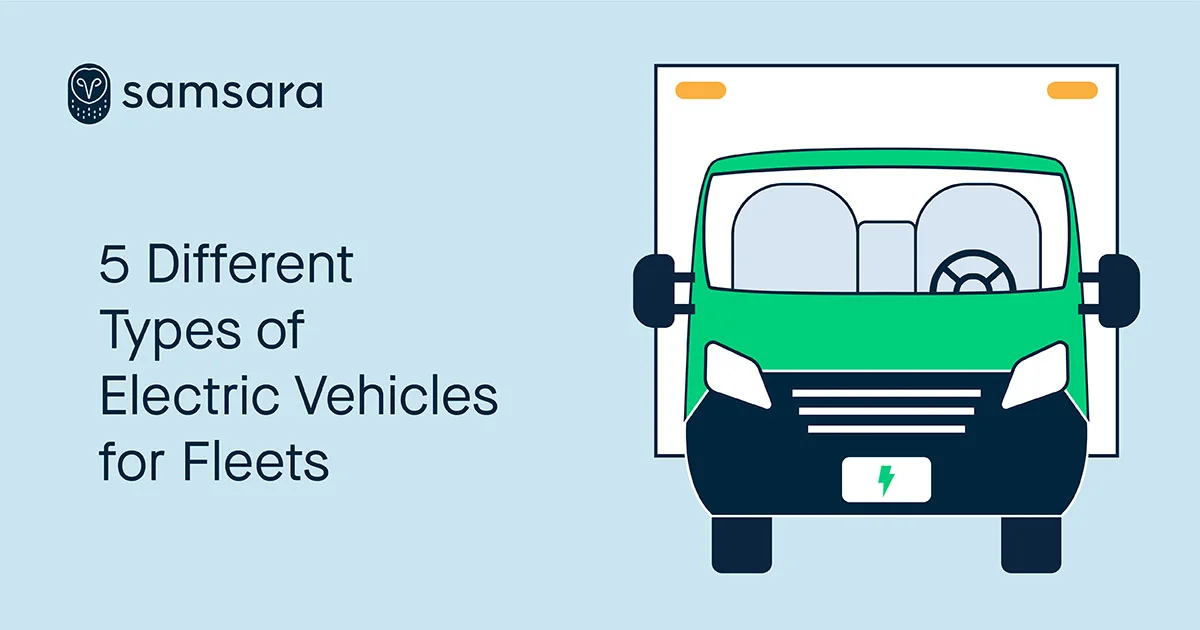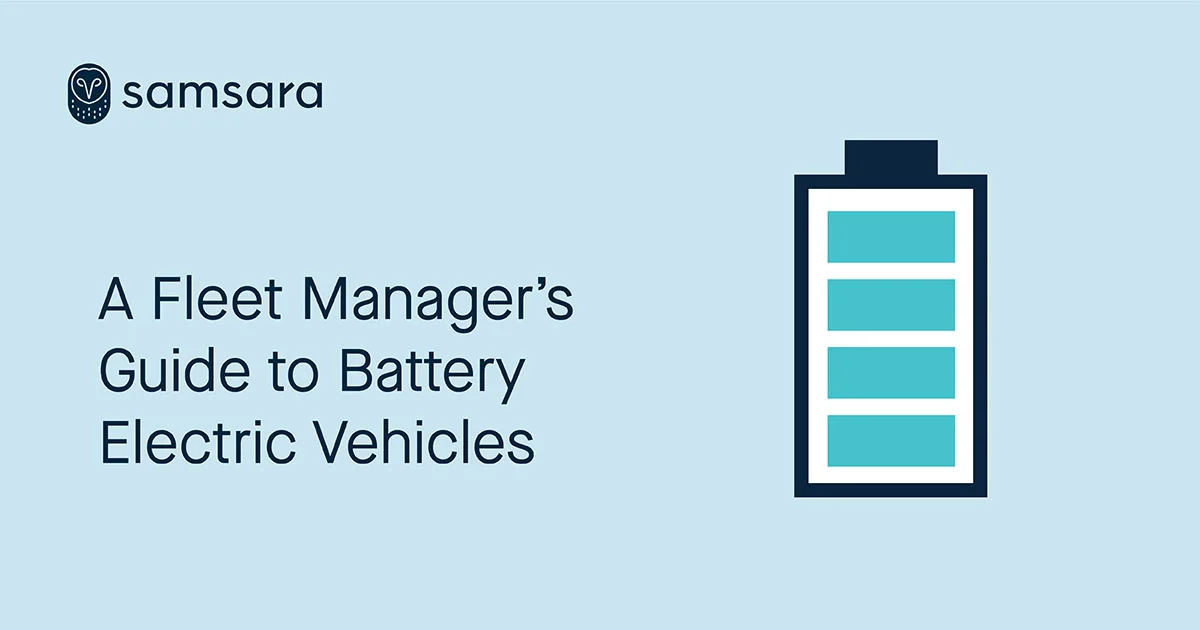
3 Stages of Fleet Electrification
Electrification is a unique journey for every fleet. Samsara’s innovative solutions help craft your strategy to address the nuances of these essential stages will be invaluable for a successful transition and maximize the impact of electric vehicles (EVs) on your fleet operations.
Plan
Transition
Scale
SEE SUSTAINABILITY RESULTS
Our research shows EV investments lead to business success
EV Fleet Resources
Get the essentials on fleet electrification and better understand how an EV fleet can benefit your business, from meeting sustainability goals to saving costs.
How to Build Your Electrification Strategy
Learn how to use your fleet data to build a business case and get leadership buy-in so that your organization can capture the biggest benefits from electric vehicles.
GET YOUR GUIDE

CHALLENGES
Breaking Barriers
Fleet electrification is a complex journey that demands exhaustive planning to yield meaningful results. Learn about common issues facing our fleet customers today and how to navigate them in your own journey.

Overcome Challenges of Electrification
Learn More
Considering an EV fleet? Start here.
What are electric vehicles?
Electric Vehicles (EVs) use battery-powered electric motors instead of gasoline tanks and internal combustion engines (ICEs). EVs use renewable energy, have low- to zero-emissions, and are generally more sustainable than conventional vehicles. Additionally, electric vehicles are associated with lower fuel and maintenance costs, and total cost of ownership.
What are the different types of electric vehicles in a fleet?
There are four main categories of electric vehicles that can be used across your entire fleet—from passenger to heavy-duty vehicles—for your sustainability initiatives.
Battery electric vehicles (BEVs): all-electric vehicles that produce zero-emissions and use a rechargeable battery for motor power.
Hybrid electric vehicles (HEVs): vehicles that use both electricity and gas for power, with the battery recharging through regenerative braking. HEVs produce low-emissions.
Plug-in hybrid electric vehicles (PHEVs): vehicles that use both electricity and gas for power, with the battery recharging by plugging into an electric power source. PHEVs produce low-emissions.
Fuel cell electric vehicle (FCEVs): all-electric vehicles that use hydrogen for motor power and produce zero tailpipe emissions. Similar to conventional vehicles, hydrogen gas is stored in a tank that can be refilled in minutes.
What are the basics of EV range and charging EVs?
The switch to EVs can bring range and charge anxiety, but advancements in EV charging infrastructure helps alleviate these concerns. Single trip range will depend on the type of EV– all-electric vehicles will have shorter ranges than hybrid vehicles that use gas when electric power runs out. The typical range for all-electric vehicles is around 200-300 miles, with some models like the Tesla Model S able to drive 400 miles on a single charge. Hybrid vehicles can often complete ~600 mile trips on a combination of battery charge and gas.
Most EVs will fully charge between 15 minutes and six hours, and there are a couple variables that affect fleet charging. The first is the type of EV–all-electric vehicles have the largest batteries and will take the longest to charge, while plug-in hybrid vehicles will charge faster due to smaller batteries. Next is the type of EV charging station–Level 2 chargers use alternating current (AC) while DC Fast chargers use direct current (DC). Level 2 chargers take five to six hours to complete a charge, and are best for fleet facilities where vehicles park overnight. DC Fast chargers can complete a charge within 15-45 minutes, and are commonly associated with public charging stations on-the-road.
What is the average ROI of an electric vehicle vs. conventional vehicle?
The average purchase price of electric vehicles continues to be higher than conventional vehicles, but EV prices are expected to drop as manufacturing costs decrease and production volume increases. Consumer Reports found that the total cost of ownership of electric vehicles is up to $10,000 less than gas-powered vehicles when considering lifetime maintenance and fuel cost savings. Additionally, some EVs qualify for the federal rebate, up to $7,500, and many states offer their own set of tax incentives for EVs.
What fleet vehicles are eligible to transition to electric?
There are many opportunities to begin the transition to an electric vehicle fleet. When making your fleet electrification plan, start with light-duty vehicles that drive fewer than 200 miles per day and return to the same location when off-duty. EV fleet options for medium- and heavy-duty vehicles are emerging with several OEM providers producing models for this sector. To ensure the transition to an EV fleet goes smoothly, deploy a telematics solution to help identify the fleet vehicles best suited for electrification.
How do fleet managers optimize their electric fleet?
A fleet management solution, like Samsara Vehicle Telematics, streamlines fleet operations with fuel and energy reports, charging solutions, and real-time optimization alerts on one platform to ensure your fleet goes beyond electrification to improve the sustainability and efficiency of your EV fleet operations.


























